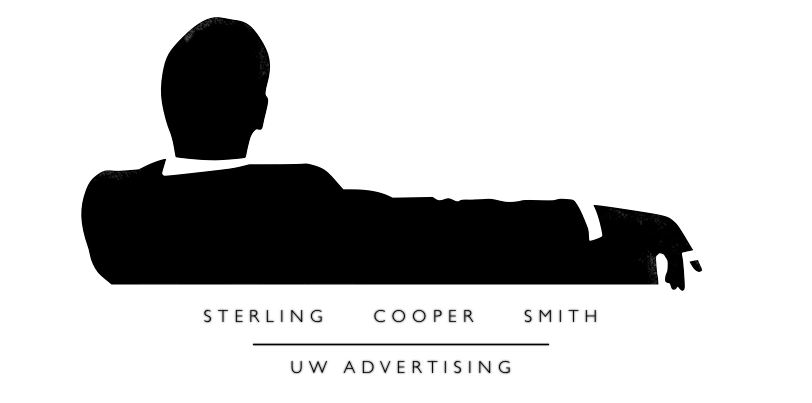
AMC's Mad Men is based around many different issues; relationships, historical events and tensions in the 1960s, and mystery about characters among others. However, regardless of what is going on in the always intriguing and scandalous lives of its employees, Sterling Cooper is an ad agency. In many scenes we see Don, Peggy, and other characters working on copy and giving presentations on advertising strategies for various clients. What always strikes me while watching the show is the fact that many of the ads look like they could be in a magazine or on a billboard today. The elegance and modern aesthetics of ads on the show like those made for Bethlehem Steel and Liberty Capitol "Executive Account" often make me wonder how accurate these ads really are to the 1960 setting of a show made today when I think of the cartoonish ads of the 60s with paragraphs and paragraphs of fine print.
However, Lucky Strike, a real life cigarette company and fictional client of Sterling Cooper, is an example of when the creators of Mad Men get it right. The show depicts quite a few real-life situations that come up in Sterling Cooper and Don's ideas for Lucky Strike's advertising, obviously twisted to make them fit the show. For example, in the first episode and subsequently there is controversy on the show surrounding the FDA and claims it allows cigarette companies to make about the health of their cigarettes. In reality, Lucky Strike did put out ads depicting doctors which claimed that their cigarettes were healthier than others. This practice is obviously no longer allowed. Another real-life example from Lucky Strike's advertising is the slogan "It's toasted." On Mad Men, Don comes up with this brilliant idea on the spur of the moment in a meeting. In reality, this slogan had been in place at Lucky Strike since 1917; however, the slogan still remains the same.
While the same accuracy and attention to detail cannot be this exact for all of the advertisements on the show, it is clear that the writers of Mad Men are paying attention to what really happened in the 1960s. The other clients on the show, such as Ponds, Bethlehem Steel, and Kodak are real companies, giving the writers of the show examples and measures for accuracy of advertising in the 1960s. Although not every ad can have such extensive history behind it, many things on the show are based on real events and people and ring true for the 1960s.
Image credits: From The New York Times Website
Links referenced: "Lucky Strike"

I have also wondered the same thing. On my trips to the local safeway (to the vern at least), I notice two advertisements from the movie theatre converted CVS. They are the cartoonish picture and a lot of writing as you have mentioned. I also wondered why the advertisements of Mad Men are different compared to what I have been told about the advertisements of the 1960s considering everything else is, for the most part, accurate.
ReplyDeleteBecause of America's more stringent copyright laws, and the material that Mad Men uses is not their own, I wonder what kind of legal issues they might have come up against in getting advertisements and using real company names. To some extent, I understand that it is possible to use company names without permission in some cases. In others, however, they must have gone through processes to earn the rights to use the ads. Did this perhaps affect the ads that they were able to show, and the companies that they were able to bring on as clients?
ReplyDelete